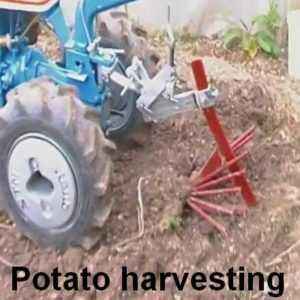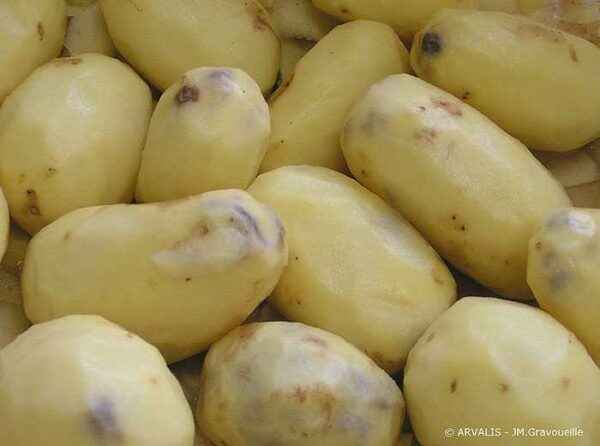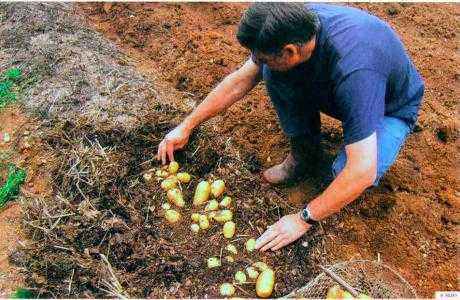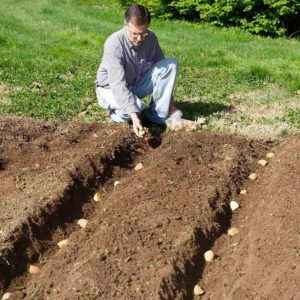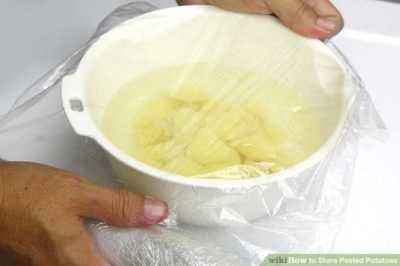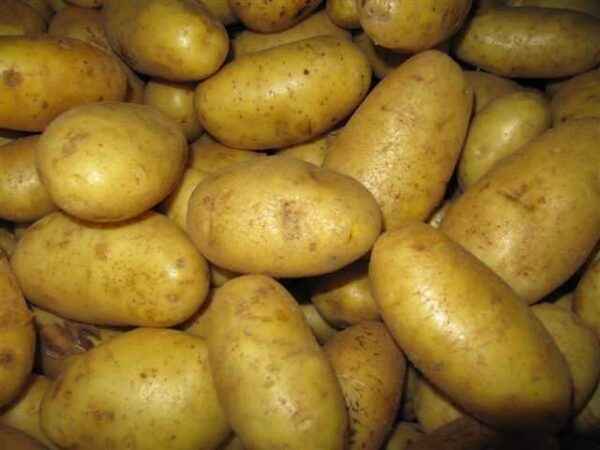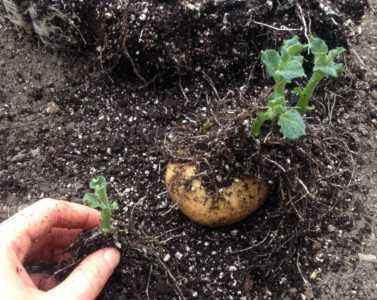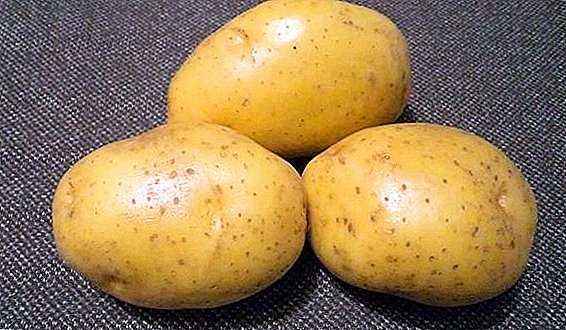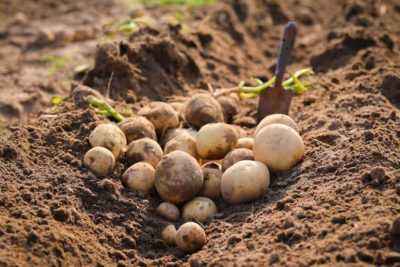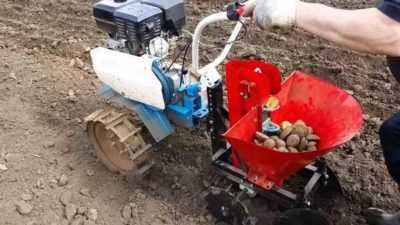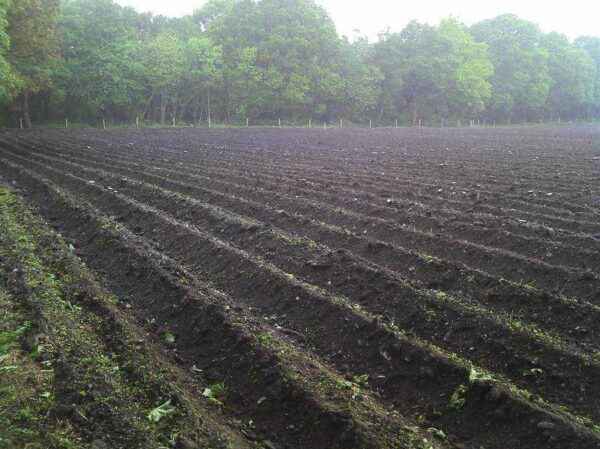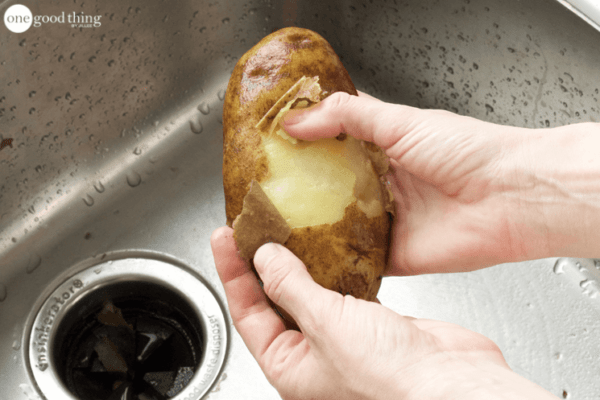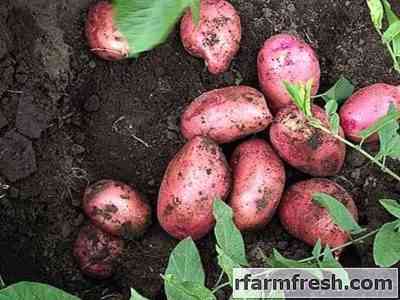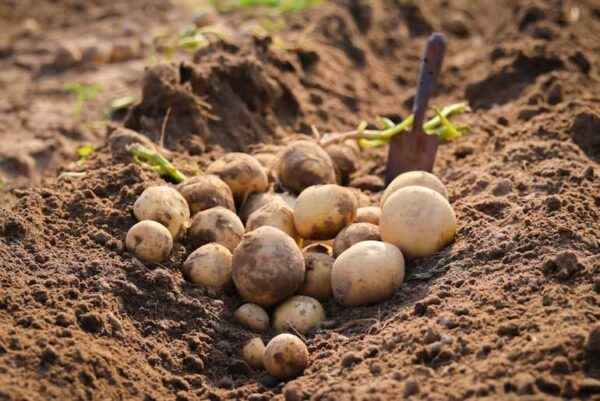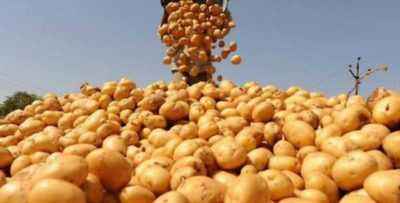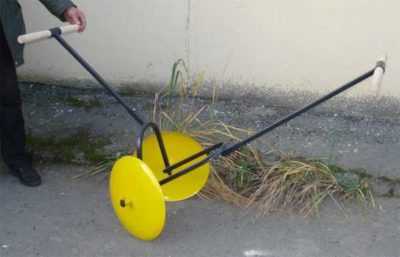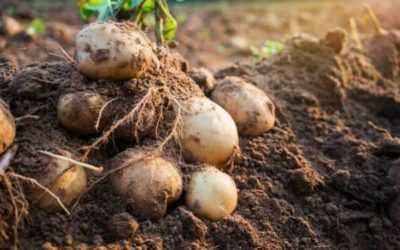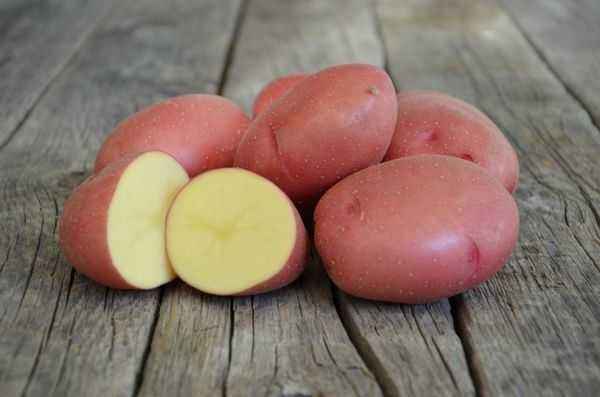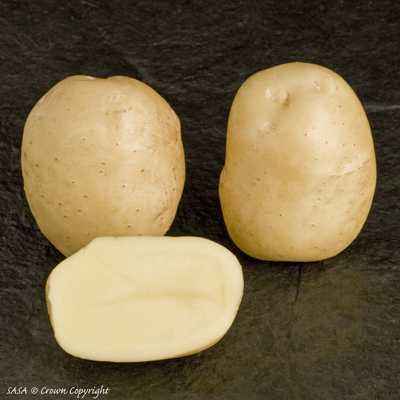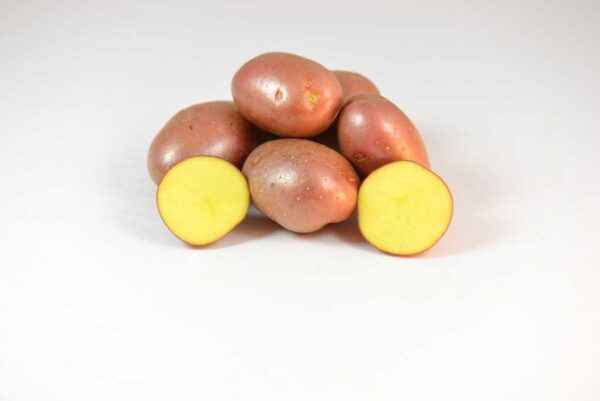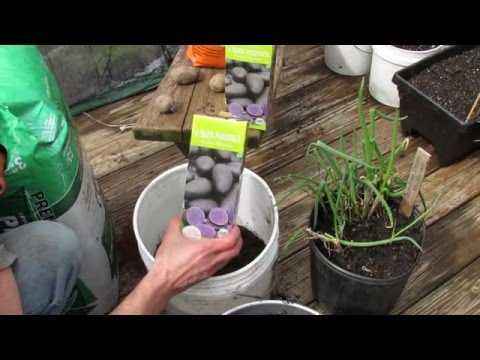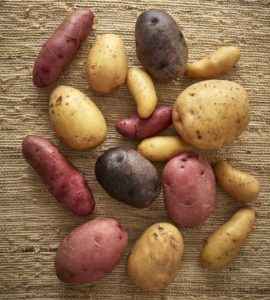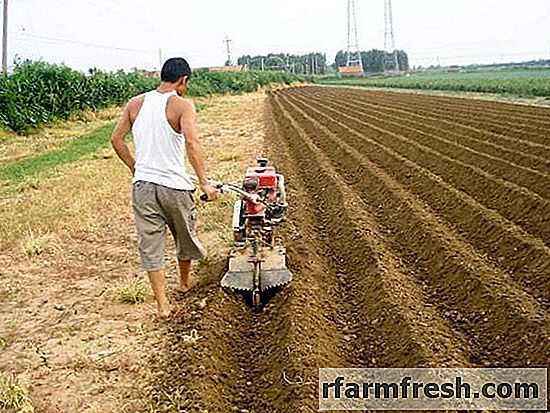Phytophthora is a dangerous fungal disease that can destroy almost the entire planting of potatoes and nightshade plants. Less commonly, buckwheat, strawberries and other crops are affected. In past centuries, this pathogen even caused hunger. Phytophthora on potatoes is manifested by dark spots and white bloom covering the tops. Tubers begin to rot in the ground.There are many methods for controlling fungus and preventing infection, but the disease has not yet been defeated until the end.
- Causes of late blight
- Signs of late blight
- Prevention of late blight
- Means for the prevention of
- Use of resistant varieties
- Treatment of late blight
- Pharmaceuticals
- Chemicals
- Folk remedies
Causes of late blight
Late blight on potatoes causes mycelial organisms oomycetes from the genus Phytophthora. Unlike mushrooms, their cell wall does not consist of chitin, but of cellulose. Physiologically, they are closer to plants than to fungi, because phytophthora, which causes plant diseases, is placed in a separate taxonomic group.
Parasitizes the microorganism on nightshade (potatoes, tomatoes, eggplants), but can also affect other plants. Propagated by zoospores that are stable in the external environment. Phytophthora quietly winters in the ground even in large frosts.Zoospores are well preserved on the surface of the soil, last year’s tops, tubers, and even on bags or dirty tools, therefore they are advised to disinfect after harvesting.
In spring, when the temperature rises above 10 ° C, zoospores germinate. This contributes to increased humidity in the region of 75-90%. No wonder late blight is detected on potatoes especially often in rainy years. Phytophthora often appears on potatoes planted in a swampy field and in a lowland.
Infection occurs in different ways. If you use diseased planting material, the fungus will spread first to the roots, and then to the stem and leaves, young tubers are affected instantly. This is the same mechanism for the spread of the disease during soil infection. Phytophthora is transferred to potatoes through the air and infects the tops. Then the spores are washed away by rain, they fall into the ground and infect the lower part of the plant. If the disease is detected in time and the plant is treated, the tubers will remain healthy.
Signs of late blight
According to the description, the incubation period of late blight of potatoes lasts 3-16 days. At first, the disease goes unnoticed, especially with the primary defeat of tubers, then brown spots appear on the tops. On the bottom of the leaves, a white coating is visible, which looks like a thin cobweb. This is the fungus mycelium. After the onset of the first symptoms, the disease progresses rapidly. The tops wither and wither for several days.
If you dig up tubers from the soil under an infected bush, you will notice brown spots that unevenly cover the surface of the potato. The section shows how the fungus penetrates deep into the tuber, brown paths go from the surface to the center, then the potato begins to rot. Nothing may remain under the bushes at the time of harvest.
Affected tubers also deteriorate when stored. Within a few weeks, the entire supply turns into a rotten mass.
Prevention of late blight
A disease such as late blight of potato is difficult to treat, because the main way to combat it is to prevent the disease . Particular attention is paid to planting material. You can not plant tubers with spots, signs of rot.
To identify a latent disease, the tubers are heated before planting at a temperature of 15-18 ° C for 1-2 weeks. Brown-purple spots or rot immediately appear on the affected tubers. Before planting, it is desirable to treat them with fungicides. For example, copper sulfate, immunocytophyte or agate-25. Germination before planting in a cool room gives a good result.
Protecting potatoes from late blight is impossible without proper soil preparation. You can not plant a crop after tomatoes, eggplant, buckwheat: the soil can be infected. These plants also should not grow near the potato field. If phytophthora starts on tomatoes, it will also spread to potatoes.In one place it is not recommended to grow potatoes more than 2-3 times in a row. The culture grows well after legumes, oats, mustard. The grass is dug up in the autumn, but they are not mowed or carried out of the field. It becomes an excellent fertilizer, and mustard prevents late blight on potatoes.
Planting should not be too dense, then the disease is more slowly transmitted from bush to bush. It is advisable to choose a site in an open, elevated place, well-ventilated and sunlit place. It is imperative to carry out hilling during the summer, weed weeds: then the potatoes are less sick.
Before harvesting, the tops are mowed and taken away from the field, in no case by digging. Harvest as early as possible until it rains. To prevent rotting, the crop is dried before being stored in the basement for 2-3 weeks.
After harvesting, the soil is thoroughly cleaned of tops and remaining tubers.
Phytophthora develops on potatoes if fertilized its too much nitrogen. From this, the leaves grow magnificently, and the tubers do not develop well. Potassium and phosphate fertilizers, on the contrary, prevent the disease. This is a wonderful fungicide.
Prevention Tools

All plants need to be processed
To prevent the disease, you can use effective remedies for late blight on potatoes.Apply industrial chemistry, folk methods.
Prevention of late blight on potatoes is carried out with the following fungicides:
- copper sulfate (2 g per bucket);
- Bordeaux liquid;
- “Arcedil”;
- “Ridomil RC”;
- “Oksikhom”;
- “Fitosporin”;
- whey or reverse;
- iodine.
It is advisable to treat all planting stock with the preparations, and then spray the first shoots. The third treatment begins in June, when the plant is developing most intensively. When the summer is wet, the plant is again sprayed with special means at the end of July, after flowering. After flowering, it is best to use the following drugs:
- “Ditamin M-45” (30 g / l);
- copper chloride (60 g / 15 l);
- Kuproksat (40 g / 15 l).
Processing of tops and leaves against the fungus is carried out twice with an interval of one week. Growth stimulants give a good effect. Here are their dosages per 15 liters of water:
- Oksigumat – 150 ml;
- “Excil” – 5 ml;
- “Epin” or “Epin plus” – 3 ml;
- “Ecosil VE” – 5 ml.
It is better to stimulate plants with stimulants at the beginning of the growing season. Such measures strengthen plants, after which it is easier to deal with late blight.
Use of resistant varieties
For many decades, breeders have been trying to develop late blight varieties. Unfortunately, there is no completely insensitive to disease potatoes.But there are varieties that are less and less affected by the fungus. Here are some of them:
- Rosara;
- Spring;
- Lazarus;
- Nevsky;
- Arina;
- September;
- Sante;
- Mavka;
- Verb;
- Visa;
- Twinkle;
- Tomich;
- Blue.
When choosing resistant varieties, it is important to pay attention to whether they are suitable for the climatic zone, what is their yield, ripening time. Early potato is less likely to be affected by late blight.
Blight treatment

The disease must be treated on time
What should I do if the disease could not be prevented? Is there any way to save potatoes? The fight against late blight on potatoes will bring good results if the disease is detected in time. Potatoes need to be treated in the early days, as the fungus spreads rapidly. Then, no measures to combat it will help.
Pharmacy products
There are effective drugs for potato late blight in any pharmacy. The antifungal drug Trichopolum helps to fight the pathogen well. One tablet of the drug is diluted in a liter of water, after which the bushes are sprayed. The procedure is repeated after a week.
Helps to prevent and treat the disease of home potato late blight ordinary iodine. To do this, take an alcohol solution and drop 10-25 drops per 1 liter of water.The bushes are treated 2-3 times with a frequency of 5-7 days. To increase efficiency, iodine is not dissolved in ordinary water, but in milk or whey. The dosage remains the same. Milk creates a protective film on the leaves and stems, which prevents the fungus from spreading to new areas.
Chemicals
Fighting late blight on potatoes with chemicals is an effective way get rid of the cause of the disease. The disadvantage of this method is its harmfulness. Chemicals during processing can get on the skin, mucous membranes, in the respiratory system, therefore, you should use protective equipment. If you overdose or treat them with plants before harvesting, too many harmful substances remain in the tubers, which is harmful to health or leads to poisoning, so when using agricultural chemistry, you must strictly follow the instructions.
Processing potatoes from late blight by the following means:
- “Arcedil” (50 g / 10 l);
- “Ridomil RC” (25 g / 10 l);
- “ Oksikhom “(20 g / 10 l).
When the potatoes finish blooming, they spray the tops and leaves with the following means:
- ” Ditamine M-45 “(20 g / 10 l);
- copper oxychloride (40 g / 10 l);
- ” Kuproksat “(25 g / 10 l).
A good effect is obtained by spraying with copper sulfate (its norm is 2 g / 10 l), 1% solution of Bordeaux liquid, copper sulfate (20 g / 10 l), weak pink solution of potassium permanganate and combinations with it.
Folk remedies
If you do not want to use chemistry, you can try one of the folk recipes. These methods are less effective, but on a small bed they can completely cope with a fungus, the signs of which have just appeared. The fight against late blight on potatoes by various folk remedies is very popular among summer residents. Here are some interesting ways:
- Garlic is a wonderful fungicide that can protect potatoes from fungus. Take 100 g of garlic, insist in a day in 10 l of water, filter, and then process the potatoes with infusion. To increase efficiency, a couple of drops of potassium permanganate are added to the infusion. Spraying is carried out weekly.
- A liter of acidified kefir is dissolved in 10 liters of water, insisted for a couple of hours, filtered and treated the bed. The procedure is repeated 3-4 times in a week.
- Take whey, dissolve it in water in a ratio of 1: 1, spray the bushes every 2-3 days.
- Phytophthora is afraid of the usual swamp horsetail . Take 100 g of dry or 150 g of fresh horsetail, add a liter of water, bring to a boil and cook for 30 minutes. Filter the broth and cool, dilute in 5 liters of water, spray the field once a week.
- Soak 1 kg of hay in 10 liters of water, pouring a handful of urea into it, insist for 3-4 days.Plants are sprayed with this infusion every 10-15 days.
- The fungus fungus is decanted from the tree, chopped well, pour 10 l of boiling water and cover it. After cooling, processing of leaves and stems of potatoes against late blight begins. The procedure is repeated every 10 days.
- The beds during the growing season are covered with agrofilm.
- They spread mulch from hay or straw: it helps to fight the spread of late blight from bush to bush.
- Aisles sprinkled with wood ash.
If the late blight is planted on potatoes, the bushes are processed until harvested, even if the signs have disappeared. With the ineffectiveness of folk methods, they switch to chemical means, otherwise the whole crop will die. In the autumn, before storing the tubers for storage, they are also processed, otherwise it will not be possible to preserve the crop, all the potatoes will rot. For processing, you can use copper sulfate, iodine, trichopolum or other means.
The next year should not be planted potatoes . You can sow the field with mustard, lupine, vetch or oats, then add these plants to fertilize the ground.A year later – to plant corn there. The affected potatoes should never be used on seeds.
